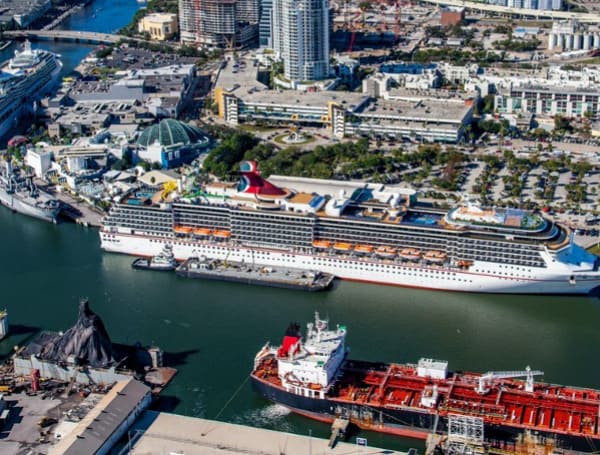Global supply-chain issues last year helped push cargo traffic at Florida’s 16 seaports slightly ahead of pre-pandemic numbers, while the cruise industry is expected to return to pre-pandemic passenger counts this year.
The annual Seaport Mission Plan, issued Wednesday by the Florida Ports Council, said the state’s ports handled 112.5 million tons of cargo last year, up 6 percent from 2021 and 0.5 percent higher than in 2019, the last full year before the COVID-19 pandemic.
Meanwhile, the cruise industry in Florida recorded 10.77 million passengers in 2022, 41 percent fewer than in 2019, according to the council report.
In the news: Bill Filed In Florida To Prevent Dogs From Sticking Their Head Out The Car Window
Michael Rubin, president, and CEO of the ports council, said the cruise industry is trending this year toward the 2019 totals. Florida’s cruise industry handles about 60 percent of all U.S. passenger traffic and plays a vital role in the state’s tourism industry.
“The parking decks are full. I’ve got (Port) Canaveral and (Port) Everglades and (Port) Miami trying to rent out areas off port to park people,” Rubin said. “I think we’ll beat ’19 this year. People have been sitting at home and going, ‘Hell, I gotta get back out.’”
Rubin, also the administrator of the Florida Seaport Transportation and Economic Development Council, said the increase in cargo last year stemmed from shipping companies looking to avoid slowdowns at the California ports of Los Angeles and Long Beach while carrying cargo from Asia and South America.
“I think the supply-chain crisis and our ability to react to it was probably the number one thing,” Rubin said.
“We’re always trying to peel away those things that are coming over to this side (of the U.S.),” Rubin added. “We’re getting more from the Europe side and certainly more is coming through the Suez (Canal) from Asia.”
In the news: Hurricane Ian Flood Claim Payments Top $2.2B In Florida
Rubin said Gov. Ron DeSantis helped highlight Florida’s ports as supply-chain backups drew international attention and as shipping firms sought different ports to unload cargo.
“It used to be that you had a significant deficit on the East Coast versus the West Coast, on consumer products coming in,” Rubin said. “And it’s actually a little bit more on the East Coast of the United States now. And I don’t see that reversing.”
Florida, like the rest of the U.S., is also benefiting from an increase in trade with Mexico.
With Mexico, the United States’ top trading partner in terms of value, exports to Mexico were up 30.7 percent from 2020 to 2021, and imports from Mexico grew by 18.3 percent in the same time, according to the latest figures from the U.S. Department of Commerce’s Bureau of Industry and Security.
DeSantis last month proposed a budget for the 2023-2024 fiscal year that would provide $150.5 million for ports, up from $135.86 million in the current fiscal year. Lawmakers will consider the proposal during the legislative session that will start on March 7.
The newly released ports report listed $2.3 billion in priority projects to expand port capacity.
The projects ranged from $981 million for cruise-terminal developments at Port Miami and $100 million for dredging, turning-basin expansion, and other improvements at Port Tampa Bay to $3.5 million for the Maritime High-Performance Center of Excellence Dock Complex at the Port of Pensacola and $505,000 for infrastructure development at the newly designated Port Putnam.
Android Users, Click Here To Download The Free Press App And Never Miss A Story. Follow Us On Facebook Here Or Twitter Here. Signup for our free newsletter by clicking here.

